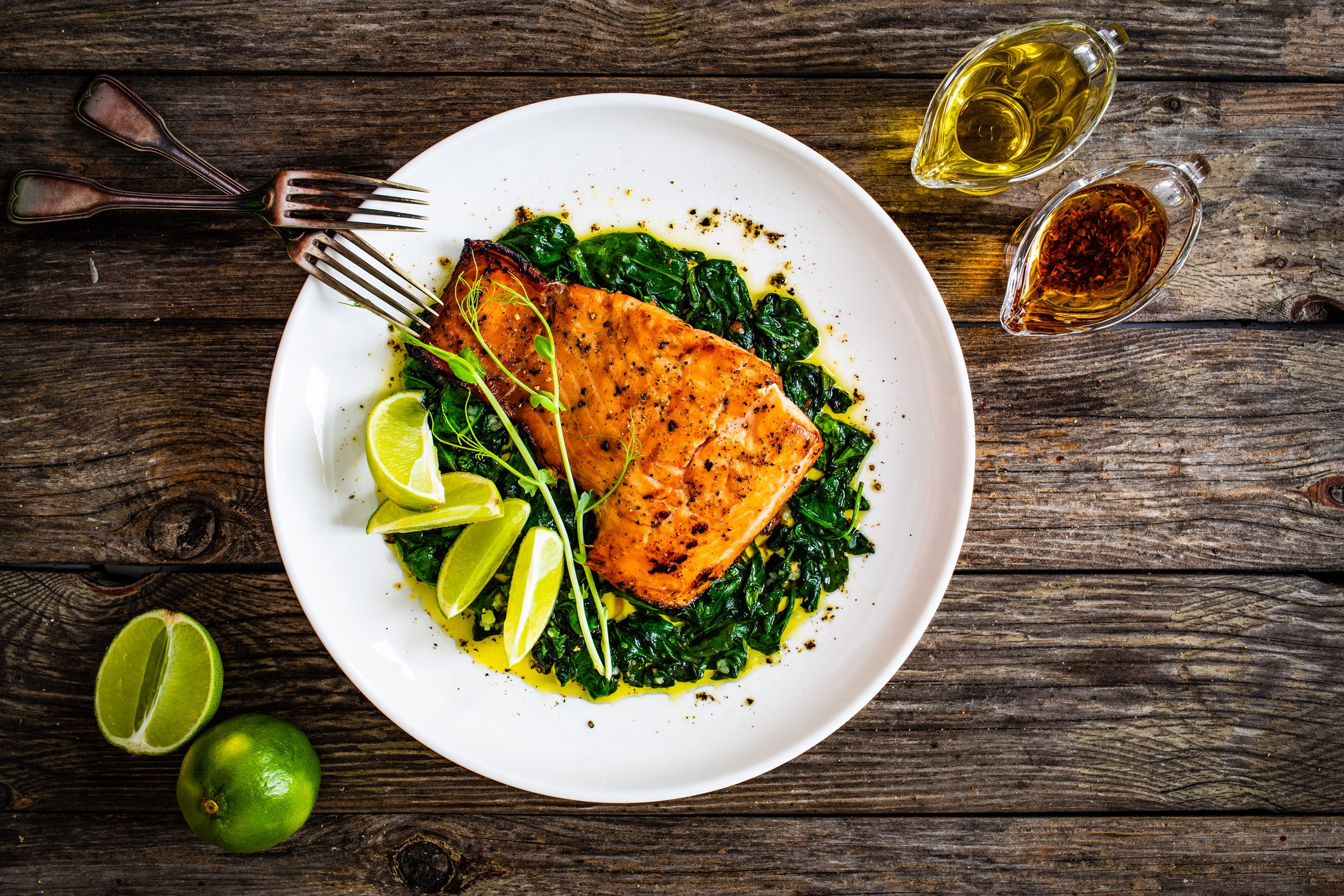We sometimes take bone health for granted, but its significance becomes increasingly evident with age. Approximately 80% of the 10 million Americans diagnosed with osteoporosis are women. Sadly, one in two women over 50 will experience a bone fracture due to osteoporosis.1
Beyond providing structural support and mobility, bones safeguard vital organs and store essential nutrients.
Bone density, which measures the quantity of mineral content within a specific volume of bone tissue, is a critical indicator of bone strength and overall health. Maintaining healthy bone density is essential to prevent osteoporosis and ensure optimal skeletal support throughout life.
Bone Health During Menopause
While bone density generally remains stable between the ages of 25 and 50, it starts to decline after age 50. You may have a more significant decline during menopause.2 This decreased bone density makes you more susceptible to fractures, particularly in the hip, spine, and wrists, and increases the risk of osteoporosis, characterized by fragile and brittle bones.
In addition to age and gender, several other risk factors contribute to osteoporosis, including:
- Low estrogen levels
- Lower body mass index (BMI)
- Inadequate intake of essential nutrients like calcium and vitamin D
- A sedentary lifestyle
- Smoking
- Excessive alcohol consumption
- Some medications
- Specific medical conditions, including rheumatoid arthritis, Crohn’s disease, and celiac disease, which can impact bone density3
Prioritizing bone health as early as possible can help reduce those risks. Bone health is especially critical during perimenopause. Even if you are pre-menopausal, your risk of bone loss can be significant, making prevention a key strategy for maintaining lifelong bone health. The best place to start is with what you eat.
What to Eat for Strong Bones
What you eat is pivotal in supporting bone health to preserve bone strength and prevent the risk of fractures and osteoporosis.
Protein
Protein is crucial for maintaining strong bones. Approximately 50% of bone mass is made up of protein (primarily collagen), which provides structural integrity and flexibility and reduces the risk of fractures. Proper protein intake is vital for both building and maintaining bone density, as it aids in calcium absorption, an essential mineral for bone strength.4-6
Strong muscles play a pivotal role in maintaining bone health. Muscles generate mechanical forces on bones during physical activities, which stimulate the growth and preservation of bone tissue. Around menopause, increasing protein intake can help decrease the likelihood of functional limitations like reduced mobility and lack of physical independence from falls and fractures.7

Best Protein Sources for Bone Health:
- Wild-caught salmon: Great source of protein, omega-3 fatty acids, and bone-supporting nutrients like astaxanthin. This Blackened Salmon pairs equally well atop a salad or as a main entree.
- Grass-fed beef: Red meat is an awesome source of protein with anti-inflammatory omega-3s and conjugated linolenic acid (CLA). CLA is a fatty acid that can help manage inflammation, support your body’s antioxidant abilities, and help you maintain a healthy weight.8
- Poultry: Chicken and turkey, such as this Healthy Slow Cooker Lemon Thyme Chicken, are excellent lean protein sources.
- Legumes: Beans, lentils, and chickpeas are plant-based protein sources containing other bone-supporting nutrients like fiber and minerals. Legumes are versatile, too—try these Lentil Nut Burgers with Cilantro Vinaigrette.
- Pasture-raised eggs. If you’re not egg-intolerant, eggs are highly nutritious sources of protein. Try these Individual Baked Breakfast Frittatas.
Omega-3 Fatty Acids
Omega-3 fatty acids play a significant role in increasing bone density. Omega-3s come in several types:
- Eicosapentaenoic acid (EPA) and docosahexaenoic Acid (DHA): Found in fish and seafood, these essential omega-3s contribute significantly to bone strength.
- Alpha-linolenic acid (ALA): A plant-based omega-3 found in flaxseeds, chia seeds, walnuts, and hemp seeds.
The prevalence of fractures, particularly around menopause, is often linked to increased bone breakdown and chronic inflammation. Omega-3 fatty acids combat this through their anti-inflammatory properties, reducing the risk of osteoporosis and enhancing bone mineralization.9
Omega-3s also play an active role in promoting bone mineralization. In this crucial process, calcium and phosphorus are deposited into the bone matrix, enhancing bone hardness and durability. These fatty acids enhance your body’s capacity to absorb calcium, a fundamental building block of bones. Improved calcium absorption contributes significantly to overall bone strength.10
Best Omega-3 Fatty Acids Sources for Bone Health:
- Fatty fish: Fatty fish like salmon, mackerel, sardines, and trout are among the best natural sources of omega-3 fatty acids. They offer a double benefit by providing omega-3s and high-quality protein for bone health. These Herbed Salmon Cakes with Tartar Sauce make a delicious way to get more protein and omega-3s.
- Flaxseeds: Flaxseeds are a plant-based source of omega-3s, particularly alpha-linolenic acid (ALA). I love adding ground flaxseeds to loaded smoothies.
- Chia seeds: Chia seeds are rich in ALA. Toss them into your loaded smoothie!
- Walnuts: Walnuts contain ALA and make a convenient, tasty add-on to salads. Plus, they’re an easy swap for peanuts.
Calcium
Calcium is vital for strong bones and teeth, serving as a key component in the bone matrix and enhancing bone structure and strength. During life stages like menopause, maintaining adequate calcium intake is crucial. It plays an essential role in preserving bone density, lowering the risk of osteoporosis, and supporting overall bone health by retaining bone mass and enhancing strength.11, 12
Best Calcium Foods for Bone Health:
- Canned fish with bones: Canned fish like salmon and sardines with their soft, edible bones are excellent sources of calcium. The bones are a good source of both calcium and vitamin D.
- Almonds: Almonds are a great non-dairy source of calcium. They also offer additional nutrients like vitamin E and magnesium. Try them in my Cinnamon Almond Overnight Oats.
- Leafy greens: Dark leafy greens like kale and bok choy are rich in calcium and provide a range of other vitamins and minerals beneficial for bones. This Braised Kale is a flavorful way to support bone health.
- Legumes: Beans, lentils, and chickpeas contain calcium to support healthy bones. Half a cup of these Roasted Spiced Chickpeas provides around 49 mg of calcium.
Vitamin D
Vitamin D, a fat-soluble vitamin, is essential for maintaining healthy bones, especially during life stages like menopause. It facilitates calcium absorption, which is critical for maintaining bone density and strength. Vitamin D also regulates the balance between bone buildup and breakdown, ensuring overall bone integrity.13
In addition to enhancing bone mineralization by aiding calcium and phosphorus absorption, Vitamin D plays a role in immune function and wound healing, indirectly benefiting bone health and recovery from bone injuries or fractures.14, 15
Best Vitamin D Foods for Bone Health:
- Fatty fish: Salmon, mackerel, and sardines are not only rich in Vitamin D but also provide omega-3 fatty acids, which are beneficial for bone health.
- Egg yolks: Yolks contain vitamin D, making them a natural nutrient source.
- Mushrooms: Some mushrooms, particularly shiitake and maitake, can provide vitamin D when exposed to UV light during growth. These Green Beans with Shiitakes and Shallots are a great way to get your greens and vitamin D-rich mushrooms.
Your vitamin D level should be 50-80 ng/ml. If you’re unable to get tested with your doctor, this vitamin D test from YourLabwork is an easy way to test your levels in the convenience of your home.
Vitamin K
Vitamin K is essential for bone health during menopause as it helps regulate bone calcium. This fat-soluble vitamin plays a crucial role in depositing calcium where it’s needed, specifically in bone tissue, while preventing its buildup in soft tissues. This process promotes bone mineralization, reduces the risk of fractures, and supports overall bone strength.16
Best Vitamin K Foods for Bone Health:
- Leafy greens: Kale, spinach, Swiss chard, collard greens, and turnip greens are excellent sources of vitamin K.
- Broccoli: Broccoli is a cruciferous vegetable with significant vitamin K. This Paleo Steamed Broccoli with Garlic Oil Drizzle makes meeting your veggie quota simple and delicious.
- Brussels sprouts: These small cabbage-like vegetables provide a good dose of vitamin K. If you’re not a fan, these Roasted Brussels Sprouts with Bacon will change your mind!
- Cabbage: Both green and red cabbage are sources of vitamin K. This Vietnamese Chicken and Cabbage Salad is a flavorful way to get bone-supporting nutrients.
Magnesium
Magnesium, an essential mineral, is involved in over 300 biochemical reactions, including those critical for muscle and nerve function, blood-sugar control, blood-pressure regulation, and protein synthesis.
Crucially, magnesium contributes to bone health by maintaining the structural integrity of bones, promoting resilience and strength, particularly during menopause. This mineral works in tandem with calcium to preserve bone density and strength, making it indispensable for reducing fracture risks and osteoporosis.
Furthermore, magnesium is vital for activating vitamin D, necessary for effective calcium absorption. Insufficient magnesium can hinder vitamin D functionality, impacting calcium utilization.17-19
Best Magnesium Foods for Bone Health:
- Leafy greens: Spinach, kale, Swiss chard, and collard greens are excellent sources of magnesium. If you think greens are boring, this Stir-Fried Kale with Ginger will change your mind!
- Nuts: Almonds, cashews, and peanuts are rich in magnesium as well as protein and healthy fats. If you’re looking for nuts with a kick, these Smoked Paprika and Cayenne Roasted Almonds are sure to make your taste buds happy.
- Seeds: Pumpkin seeds, sunflower seeds, and flaxseeds are magnesium-packed options. Get creative with where you add them, such as with this Roasted Jalapeño Guacamole with Toasted Pumpkin Seeds.
- Legumes: Beans, lentils, and chickpeas provide substantial magnesium.
Zinc
Zinc is an essential mineral involved in immune-system support, wound healing, food metabolism, and collagen production. Zinc’s contribution to collagen formation ensures that bones remain strong, so they’re better equipped to withstand external pressures. Strong bones decrease your risk of fractures, promoting overall bone health during menopause.
Zinc also actively participates in the mineralization process, which involves depositing essential minerals like calcium and phosphorus into the bone matrix. These minerals contribute to bone hardness and durability. Zinc ensures that bones stay hard and resilient, reducing the risk of fractures and supporting overall bone health.20-22
Best Food Sources of Zinc for Bone Health:
- Oysters: Oysters are exceptionally rich in zinc, containing more zinc per serving than any other food.
- Grass-fed beef: Grass-fed beef is a good source of zinc and provides high-quality protein, which is also beneficial for bone health.
- Poultry: Chicken and turkey are excellent sources of zinc. Looking for a new way to enjoy poultry? Try my Cilantro Turkey Burgers with Chipotle Ketchup.
- Legumes: Beans, lentils, and chickpeas offer zinc, fiber, and other essential nutrients.
- Nuts and seeds: Cashews, pumpkin seeds, and hemp seeds contain zinc. You can use cashews to make dairy-free cheese, too!
Other Ways to Support Bone Health
Resistance training and a nutrient-rich, eat-protein-first diet play a vital role in preserving bone strength and preventing fractures, osteoporosis, and other problems. Incorporating these foods and lifting heavy is the optimal way to support bone health during menopause.
Menopausal women often underestimate the risk of osteoporosis and fragility fractures.23 Undergoing regular DEXA scans can help identify early bone health issues by assessing bone density and detecting signs of bone loss or osteoporosis before they progress significantly. These scans offer valuable insights for evaluating fracture risk and guiding preventive measures and treatments tailored to the menopausal transition.
Resilient, Healthy Bones Demand Strong Muscle
Muscle is the key to supporting strong bones. My Resistance Training Cheat Sheet provides everything you need to build and maintain muscle, including home gym essentials, an 8-week workout plan, and a progress tracker to track your sets, reps, and weights with each workout.
Get your FREE Resistance Training Cheat Sheet here.
References:
- Bone Health & Osteoporosis Foundation: What Women Need to Know – Bone Health & Osteoporosis
- John Hopkins Medicine: Osteoporosis: What You Need to Know as You Age
- Pouresmaeili F, Kamalidehghan B, Kamarehei M, Goh YM. A comprehensive overview on osteoporosis and its risk factors. Ther Clin Risk Manag. 2018 Nov 6;14:2029-2049. doi: 10.2147/TCRM.S138000. PMID: 30464484; PMCID: PMC6225907.
- Healthline: 10 Natural Ways to Build Healthy Bones
- Mohamed AM. An overview of bone cells and their regulating factors of differentiation. Malays J Med Sci. 2008 Jan;15(1):4-12. PMID: 22589609; PMCID: PMC3341892.
- Bonjour JP. Protein intake and bone health. Int J Vitam Nutr Res. 2011 Mar;81(2-3):134-42. doi: 10.1024/0300-9831/a000063. PMID: 22139564.
- Hong AR, Kim SW. Effects of Resistance Exercise on Bone Health. Endocrinol Metab (Seoul). 2018 Dec;33(4):435-444. doi: 10.3803/EnM.2018.33.4.435. PMID: 30513557; PMCID: PMC6279907.
- Lehnen TE, da Silva MR, Camacho A, Marcadenti A, Lehnen AM. A review on effects of conjugated linoleic fatty acid (CLA) upon body composition and energetic metabolism. J Int Soc Sports Nutr. 2015 Sep 17;12:36. doi: 10.1186/s12970-015-0097-4. PMID: 26388708; PMCID: PMC4574006.
- Abou-Saleh H, Ouhtit A, Halade GV, Rahman MM. Bone Benefits of Fish Oil Supplementation Depend on its EPA and DHA Content. Nutrients. 2019 Nov 8;11(11):2701. doi: 10.3390/nu11112701. PMID: 31717258; PMCID: PMC6893665.
- Kajarabille N, Díaz-Castro J, Hijano S, López-Frías M, López-Aliaga I, Ochoa JJ. A new insight to bone turnover: role of ω-3 polyunsaturated fatty acids. ScientificWorldJournal. 2013 Nov 4;2013:589641. doi: 10.1155/2013/589641. PMID: 24302863; PMCID: PMC3834626.
- American Academy of Orthopaedic Surgeons: Calcium, Nutrition, and Bone Health
- Linus Pauling Institute: Bone Health In Depth
- Mei Z, Hu H, Zou Y, Li D. The role of vitamin D in menopausal women’s health. Front Physiol. 2023 Jun 12;14:1211896. doi: 10.3389/fphys.2023.1211896. PMID: 37378077; PMCID: PMC10291614.
- Laird E, Ward M, McSorley E, Strain JJ, Wallace J. Vitamin D and bone health: potential mechanisms. Nutrients. 2010 Jul;2(7):693-724. doi: 10.3390/nu2070693. Epub 2010 Jul 5. PMID: 22254049; PMCID: PMC3257679.
- Wacker M, Holick MF. Vitamin D – effects on skeletal and extraskeletal health and the need for supplementation. Nutrients. 2013 Jan 10;5(1):111-48. doi: 10.3390/nu5010111. PMID: 23306192; PMCID: PMC3571641.
- Linus Pauling Institute: Vitamin K
- Rondanelli M, Faliva MA, Tartara A, Gasparri C, Perna S, Infantino V, Riva A, Petrangolini G, Peroni G. An update on magnesium and bone health. Biometals. 2021 Aug;34(4):715-736. doi: 10.1007/s10534-021-00305-0. Epub 2021 May 6. PMID: 33959846; PMCID: PMC8313472.
- Fouhy LE, Mangano KM, Zhang X, Hughes BD, Tucker KL, Noel SE. Association between a Calcium-to-Magnesium Ratio and Osteoporosis among Puerto Rican Adults. J Nutr. 2023 Sep;153(9):2642-2650. doi: 10.1016/j.tjnut.2023.05.009. Epub 2023 May 9. PMID: 37164266; PMCID: PMC10550845.
- Fiorentini D, Cappadone C, Farruggia G, Prata C. Magnesium: Biochemistry, Nutrition, Detection, and Social Impact of Diseases Linked to Its Deficiency. Nutrients. 2021 Mar 30;13(4):1136. doi: 10.3390/nu13041136. PMID: 33808247; PMCID: PMC8065437.
- Seo HJ, Cho YE, Kim T, Shin HI, Kwun IS. Zinc may increase bone formation through stimulating cell proliferation, alkaline phosphatase activity and collagen synthesis in osteoblastic MC3T3-E1 cells. Nutr Res Pract. 2010 Oct;4(5):356-61. doi: 10.4162/nrp.2010.4.5.356. Epub 2010 Oct 26. PMID: 21103080; PMCID: PMC2981717.
- O’Connor JP, Kanjilal D, Teitelbaum M, Lin SS, Cottrell JA. Zinc as a Therapeutic Agent in Bone Regeneration. Materials (Basel). 2020 May 12;13(10):2211. doi: 10.3390/ma13102211. PMID: 32408474; PMCID: PMC7287917.
- Mayo Clinic: Zinc
- Boschitsch EP, Durchschlag E, Dimai HP. Age-related prevalence of osteoporosis and fragility fractures: real-world data from an Austrian Menopause and Osteoporosis Clinic. Climacteric. 2017 Apr;20(2):157-163. doi: 10.1080/13697137.2017.1282452. Epub 2017 Feb 8. PMID: 28286986.
The views in this blog by JJ Virgin should never be used as a substitute for professional medical advice. Please work with a healthcare practitioner concerning any medical problem or concern. The information here is not intended to diagnose, treat, or prevent any disease or condition. Statements contained here have not been evaluated by the Food and Drug Administration.






